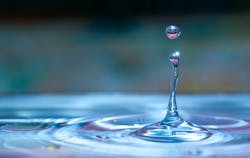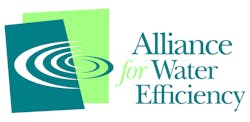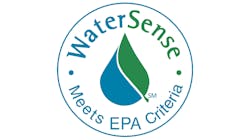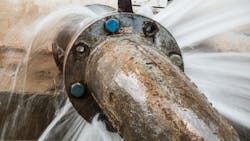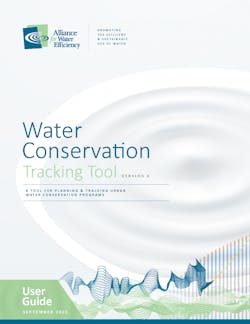We live on a planet with abundant sources of water—it’s known as the Blue Planet because 71 percent of it is covered in water. Yet less than 1 percent of the water on and under the planet’s surface is drinkable, notes the U.S. Environmental Protection Agency. More than 97 percent of Earth’s water resides in our oceans as salt water. The remainder is fresh water frozen in the polar ice caps or inaccessible for practical use.
“While population and demand on freshwater resources are increasing, supply will always remain constant,” the EPA explains. “And although it's true that the water cycle continuously returns water to Earth, it is not always returned to the same place, or in the same quantity and quality.”
With such a minuscule percentage of potable water available, it is imperative that humans conserve as much as we can. Why? Well, our increasing population is one reason. Water pollution from various sources is another. The most important is that we need water to live, and we have limited resources for an estimated 7.9 billion people.
A community of water experts
“We leverage the expertise of our members to advocate for policy change, to help North America be more efficient and sustainable with its water use, and to avoid water shortages,” says Ron Burke, AWE’s president and CEO. “We need to make sure we have reliable, affordable water supplies, which is increasingly challenging in the face of more frequent and more severe droughts.”
Those 530-plus members are organizations—water and wastewater utilities, business and industry, and federal/state/county/local governments—representing the top water efficiency experts and practitioners around the country.
“AWE is where the community of professionals who work on water efficiency and water conservation come together,” he explains. “To network, to learn from each other, to train, to develop tools and research that help advance our cause, our cause being using water more efficiently and sustainably.”
The most visible example of our water supply dilemma is the severe 21-year drought in the Western United States.
“As of May 6, 67 percent of the region was in a state of ‘severe’ drought or worse; a stunning 21 percent is already in ‘exceptional’ drought, the worst category in the U.S Drought Monitor’s framework,” notes a May National Geographic article (https://on.natgeo.com/3D8xHX6). “At Lake Mead, one of the two major reservoirs of the Colorado River, which some 40 million Americans depend on, water levels are creeping toward a threshold that would trigger the first official shortage declaration for the basin.
“The situation is unlikely to improve in the near future, scientists say, as 2021 shapes up to extend the ‘megadrought’ that researchers have found to be gripping the region mostly unabated since 2000.”
“Even in places such as Florida, Long Island and the suburbs of Chicago, places that rely on groundwater, are facing shortages in the future,” Burke says. “They need to invest in water conservation and water efficiency, to make those supplies last longer and to get to the point where groundwater is replenished at the same rate that it's being withdrawn.”
Communities that rely on surface water such as lakes, rivers and reservoirs are not immune to water shortages in the future, he adds.
“AWE’s mission, our work and our members are as important as ever, given the prospects of water scarcity becoming more widespread and more severe over time,” Burke explains. “Water efficiency is typically the fastest and cheapest way to really help sustain a reliable water supply, to increase our water resilience. We've been doing water efficiency strategies for long enough that many of them are relatively quick to ramp up.”
Efficiency first
The Alliance for Water Efficiency was founded in 2007 under the guiding hand of Mary Ann Dickinson as president and CEO. She has more than 50 years of experience in water management and conservation. Dickinson retired as CEO in March but continues as a technical advisor when needed.
Burke took over from Dickinson; he has spent his career involved in policymaking, regulatory and legislative advocacy. “What makes the Alliance for Water Efficiency unique is that we bring water efficiency and conservation experts and practitioners together from all over North America,” he says. “They learn from each other, and we leverage that expertise to help train new professionals in this space.”
The membership works on several fronts to help achieve its 2030 Sustainable Water Vision: “We're working toward a world where communities, businesses and ecosystems have the water they need to thrive. It's a world in which water is properly valued in every form, and proactively, efficiently and sustainably managed throughout the entire cycle — from the water provider to the tap and back into our waterways.”
AWE believes that to achieve that vision, these five items are necessary:
1. Efficiency-first thinking by homeowners and business owners.
2. Water-smart policies at federal, state, county and local government.
3. Fiscally healthy water systems to deliver reliable, safe and affordable water service.
4. Right-sized, watertight and intelligent systems to ensure water quality and leverage data for efficiency.
5. An integrated, systems-based approach where water efficiency is viewed as an inseparable part of the water system.
“I believe water conservation and water efficiency programs are far more comprehensive, extensive and effective today than they probably were when they first got started,” Burke says. “In places that have relatively large water systems, we've seen investment in water efficiency and conservation for a few years now. And, therefore, a new level of effectiveness and conservation has emerged, which is exciting.”
The implementation of these types of programs has accelerated because these communities recognize the need for and the benefits of water conservation. “Even if you live in a place that isn't likely to have a water shortage anytime soon, it still doesn't make sense to waste water,” he says. “When you do that, you're wasting the energy it took to treat, move and pump that water.”
And when you waste energy, you waste money.
WaterSense and the EPAct of 1992
As a water conservation/efficiency advocate, AWE is a big supporter of the EPA’s WaterSense program, which is modeled after the U.S. Department of Energy’s Energy Star program. WaterSense-labeled products and services are certified to use at least 20 percent less water, save energy and perform as well as or better than regular models. Products include showerheads, residential/commercial toilets, urinals, bathroom faucets, and irrigation sprayers and controllers.
Under the last days of the Trump administration, the DOE revised the definition of showerhead and offered separate definitions for body spray and safety shower showerhead. In doing so, the agency stated that these products were exempt from water efficiency standards.
The Energy Policy Act of 1992 dictates that new showerheads should not spray more than 2.5 gallons of water per minute. The Obama administration defined those restrictions as the total water coming out in the shower, including body sprays.
An additional rule by the Trump DOE announced that certain clothes washers and dryers would be able to use unlimited energy and water. The rule established separate product classes for clothes washers and dryers with a short cycle as the normal cycle.
AWE met with Trump administration officials to discourage the implementation of the proposals. After the rules were adopted in December 2020, the organization filed a legal appeal focused on the showerhead rules.
Plumbing and water industry groups, including AWE, then appealed to the new Biden administration to remove the Trump rules on showerheads, clothes washers and dishwashers. The DOE showerhead rule was reversed in July, reverting back to the Obama-era rule. The DOE also proposed to do the same for clothes washers and dishwashers.
“The good news is we did not see penetration, if you will, of products that were taking advantage of the weakened standards,” Burke explains. “Most of the manufacturers, at least the ones that do business in the United States, actually opposed the weakened standards from the beginning.”
Strengthening our water infrastructure
Whatever their political leaning, most Americans agree that the country’s infrastructure is close to the breaking point and that it is critical that Congress passes a comprehensive infrastructure bill. As of this writing, the Senate has passed the bill, but the House has delayed a vote.
“We've been encouraging Congress to invest in water efficiency as part of this infrastructure bill, to help with the current drought and the current challenges, but also to help every community be better positioned to deal with these challenges as they arise in the future,” Burke says.
From a homeowner or building owner standpoint, leaking means higher water bills.
“What the research shows is that, on average, lower-income, disadvantaged households are more likely to have higher flow water, plumbing fixtures and appliances,” Burke explains. “They're more likely to have leaks, so their water bills are more likely to be inflated.”
Because it’s such a complex issue, AWE works with its water utility members to help set rates that are affordable for their disadvantaged customers yet high enough to incentivize water efficiency and conservation.
Burke notes that AWE’s water utility members are much better at helping their customers identify leaks through smarter water meters. “It’s another way in which you can help any customer, not just low income, manage the cost of their water bill,” he says.
Public outreach
“We get thousands and thousands of people to use it every year,” Burke says. “The website itself has a lot of tips on how to conserve water and be more efficient, gives them recommendations on how to make improvements.”
AWE also developed a water conservation tracking tool for its water utility members. The software evaluates the water savings, costs and benefits of urban water conservation programs and for projecting future water demands. In addition to providing users a standardized methodology for water savings and benefit-cost accounting, the tool includes a library of 50 pre-defined, fully parameterized conservation activities from which users can construct conservation programs.
And recently, the organization worked with the Pacific Northwest National Lab and Maureen Erbeznik & Associates to develop tools and resources to help AWE members create, or optimize, cooling tower water efficiency programs. This includes the Cooling Tower Estimating Model and an accompanying guide.
Burke notes that the water efficiency programs put into place across the country are extremely successful.
“Over the last 25 years or so, the United States has grown by about 65 million people,” he says. “But the total public water withdrawals, water usage if you will, has stayed about the same. And that's because of water efficiency and water conservation. It's because we had more efficient standards for toilets and showerheads and urinals, dishwashers and clothes washers. All those things make a huge difference. And it's allowed this country to grow without needing more water.”
About the Author

Kelly L. Faloon
Freelance Writer/Editor
Kelly L. Faloon is a contributing editor and writer to Contractor, Contracting Business magazine and HPAC Engineering and principal of Faloon Editorial Services. The former editor of Plumbing & Mechanical magazine, Faloon has more than 26 years of experience in the plumbing and heating industry and more than 35 years in B2B publishing. She started a freelance writing and editing business in 2017, where she has a varied clientele.
Faloon spent 3 1/2 years at Supply House Times before joining the Plumbing & Mechanical staff in 2001. Previously, she spent nearly 10 years at CCH/Wolters Kluwer, a publishing firm specializing in business and tax law, where she wore many hats — proofreader, writer/editor for a daily tax publication, and Internal Revenue Code editor.
A native of Michigan’s northern Lower Peninsula, Faloon is a journalism graduate of Michigan State University. You can reach her at [email protected].
